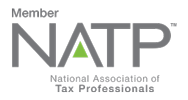There are still several ways to reduce tax liability before the end of
the year:
1) If you are eligible to itemize deductions, consider giving to
charity. Tax liability can be reduced with an end-of-year charitable
donation to a qualified charitable organization. If you are using the
standard deduction, charity contributions will have no effect.
2) Selling investments that create losses to offset gains recognized.
Capital losses can offset capital gains and allow up to $3,000 of
capital losses if you don’t have any capital gains during the year.
3) Consider funding a Roth, traditional IRA, or 401(k) plan to take
advantage of saver’s credit. A deductible IRA contribution will also
reduce adjusted gross income, which lowers your tax liability.
4) If you have a flexible spending account (FSA), evaluate and spend the
money for medical expenses. FSA are a “use it or lose it†account, so
use it before it disappears.
5) Check the total pre-tax health savings account (HSA) deductions and
adjust to maximize your pre-tax deduction and reduce taxable wages. In
2019 the contribution limit is $3,500 for single coverage or up to
$7,000 for family coverage. Over the age of 55? You can contribute and
extra $1,000.
6) Make energy-saving improvements to your principal residence.
Improvements include solar power, wind energy, and geothermal heat
pumps. The IRS allows a 30% credit on qualified solar energy property.
Improvements must completed before year end.
7) If you have rental or business income, you may be eligible for a 20%
qualified business income deduction(QBID). There are certain
qualifications for this deduction, check out our post on “Safe Harbor
for Rental Real Estate Businessesâ€.
Oct 28



